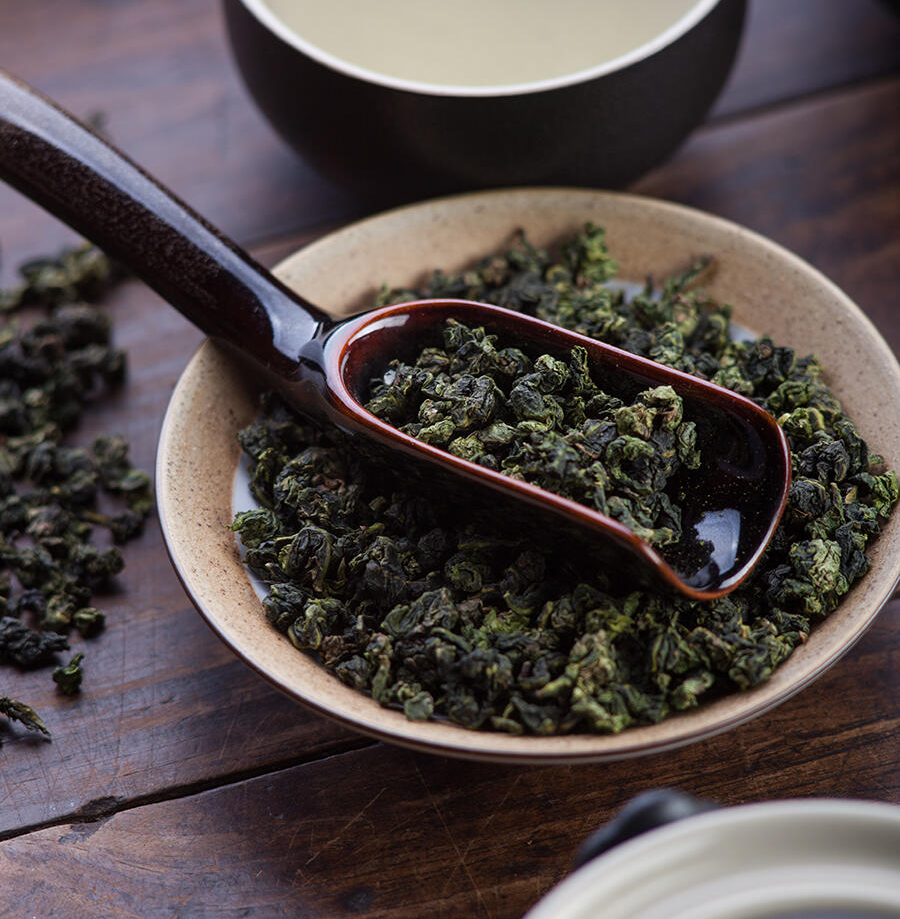Oolong tea is one of the six major types of tea in China. Oolong tea is made from the Camellia Sinensis plant (this plant can also be made into black tea and green tea).

The difference between teas is that the tea production process is different. Black tea is fully fermented tea, green tea is unfermented tea, and oolong tea is semi-fermented tea with a fermentation degree of between 10% to 70%. Therefore, oolong tea contains a certain amount of caffeine and Tea polyphenols, after drinking, it can stimulate the cerebral cortex and maintain the excitability of the brain system, and have a certain refreshing effect on the human body.
In addition, oolong tea is also divided into strip-shaped tea, granular-shaped tea, lump-shaped tea, and other shapes according to its different appearance.

Oolong tea caffeine vs coffee caffeine
Caffeine is an alkaloid found widely in many plants.
In terms of plant properties, the caffeine content in fresh tea leaves is 2%-5%, while that in coffee beans is 1%-2%.
Caffeine will sublimates due to high temperatures and is easily soluble in hot water. Therefore, different tea making processes have different temperatures and times, which also have a significant impact on the final caffeine content.
Coffee and tea are also brewed in different ways. Different tea-to-water ratios, water temperatures, and steeping times for brewing coffee or tea will affect the caffeine content.
Does oolong tea have caffeine?
Oolong tea is semi-fermented tea and contains a certain amount of caffeine. According to research, the oolong tea caffeine content is about 12-18 mg per 100 ml of tea soup, while the caffeine concentration of a cup of coffee is about 20 mg-200 mg. The specific content has a lot to do with the type of coffee. Therefore, it can be concluded that oolong tea has less caffeine than coffee. If you don't like the taste of coffee but need a caffeine boost or are looking for an alternative to coffee, oolong tea may be a good choice.
How to make oolong tea?
Tea leaves naturally contain caffeine as they grow. However, there are several points to reduce the caffeine content in tea:
- Tea to water ratio
- water temperature: the higher the brewing temperature, the more caffeine will be extracted from the tea leaves
- steeping time: the longer the steeping time, the more caffeine will be extracted from the tea leaves
Here take our Zhangping Shui Hsien oolong tea as a tea sample to share how to brew a good cup of oolong tea.
1. Hot brewing:
Tea set selection: Gaiwan (preferred) about 120-150ml
Recommended water temperature: boiled water around 100℃ (212℉)
Amount of tea leaves: The standard tea to water ratio is 1:15/20, a small piece of complete tea cake (tea cake is 8-10 grams)

First step: Preheating your Gaiwan/teapot and rinse tea for 15s. Now we start first infusion, as it's compressed tea cake, we need about 20s to let tea stretch in gaiwan. Second infusion 20s. Third infusion 15-20s. Fouth infusion 15s. You can approriate adjust your steeping time deponding on your personal tatse.
2. Cold brewing: 3-5g/800ml, refrigerated for 4-6 hours















